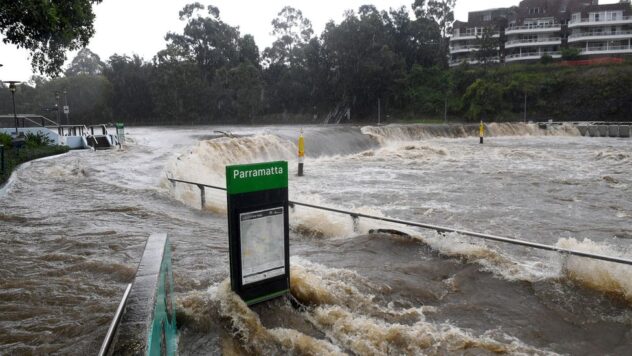
© BBC News
Pre-reading questions:
I will read each question. Then, please answer them.
- How often does it flood in your country?
- What natural disasters commonly strike your country?
Vocabulary:
I will read the words, meanings, and sample sentences. Then, repeat after me.
- border /BAWR-der/
- source /sawrs/
- tide /tahyd/
- evacuation /ih-vak-yoo-EY-shuhn/
- warn /wawrn/
[verb] – to form a line around the edge of something
The fields are bordered by sturdy fences.
[noun] – the place or thing that something comes from or starts at, or the cause of something
Where’s the source of that noise?
[noun] – the rise and fall of the sea that happens twice every day
High tides are expected today and tomorrow.
[noun] – the act of moving people from a dangerous place to somewhere safe
The evacuation of the affected people went smoothly.
[verb] – to make someone aware of a possible danger or problem so that it can be avoided
They were warned not to dive in shallow pools but the children didn’t listen.
Article reading:
Please read the whole article. Then, I will check your pronunciation and intonation.
New South Wales (NSW), Sydney, and Southeast Queensland are flooded from the overflow of rivers and dams in the areas caused by heavy rainfalls on March 22, Monday. The Hawkesbury and Nepean rivers that border Sydney to the north and west have reportedly reached higher levels than usual. The Warragamba Dam, Sydney’s main water source, on the other hand, had released 500 gigaliters of water on Sunday. According to Australia’s Bureau of Meteorology, “increased rainfall, strong winds, damaging surf, and abnormally high tides” were expected in NSW on Tuesday.
The military has been sent on search and rescue missions. To date, there have been 15,000 evacuations in the Mid-North Coast and 3,000 in Sydney. 10 million people aside from citizens in Western Australia are put under a weather warning. The Bureau of Meteorology has warned NSW and several inland areas of a “serious risk” of flash floods. “This is an ongoing situation that is evolving and is extremely dangerous,” Australian Prime Minister Scott Morrison.
The military has been sent on search and rescue missions. To date, there have been 15,000 evacuations in the Mid-North Coast and 3,000 in Sydney. 10 million people aside from citizens in Western Australia are put under a weather warning. The Bureau of Meteorology has warned NSW and several inland areas of a “serious risk” of flash floods. “This is an ongoing situation that is evolving and is extremely dangerous,” Australian Prime Minister Scott Morrison.
Comprehension Questions:
I will read each question. Then, please answer them based on the article.
- What areas in Australia are affected by the flash floods?
- According to Australia’s Bureau of Meteorology, what were expected in NSW last Tuesday?
- How many evacuations were done in the Mid-North Coast of Australia?
- Are the citizens in Western Australia put under a weather warning?
- What did Australia’s Prime Minister say about the situation in the country?
Discussion Questions:
I will read each question. Then, please answer them.
- What do you think the government should do to keep the situation under control?
- Do you think governments should construct dams with larger capacities? Why or why not?
- In what way can we help Australia in its current state?
- In your opinion, does preparation differ from one natural disaster to another? How?
- Has your area been affected by a natural disaster? Please tell me more about it.